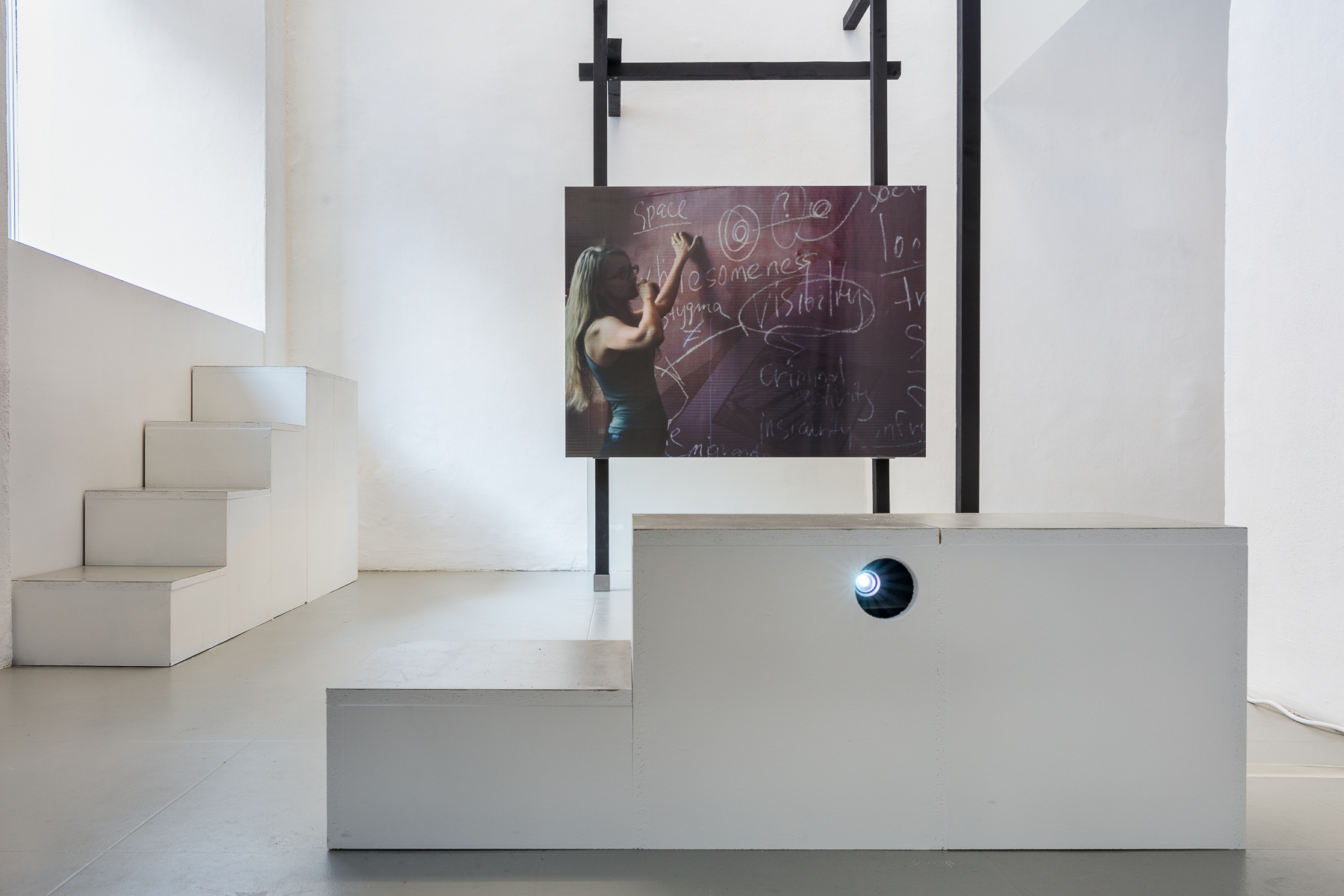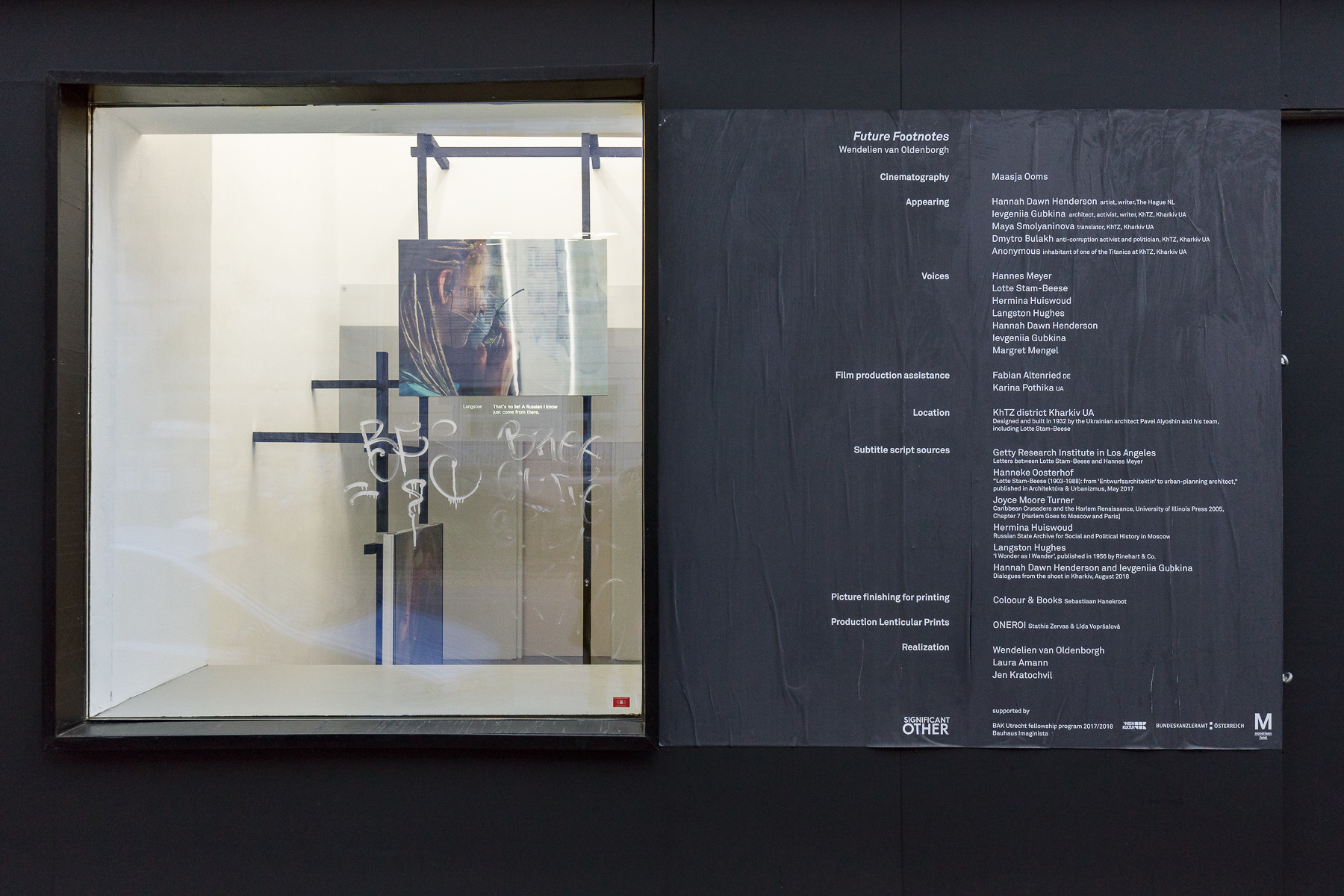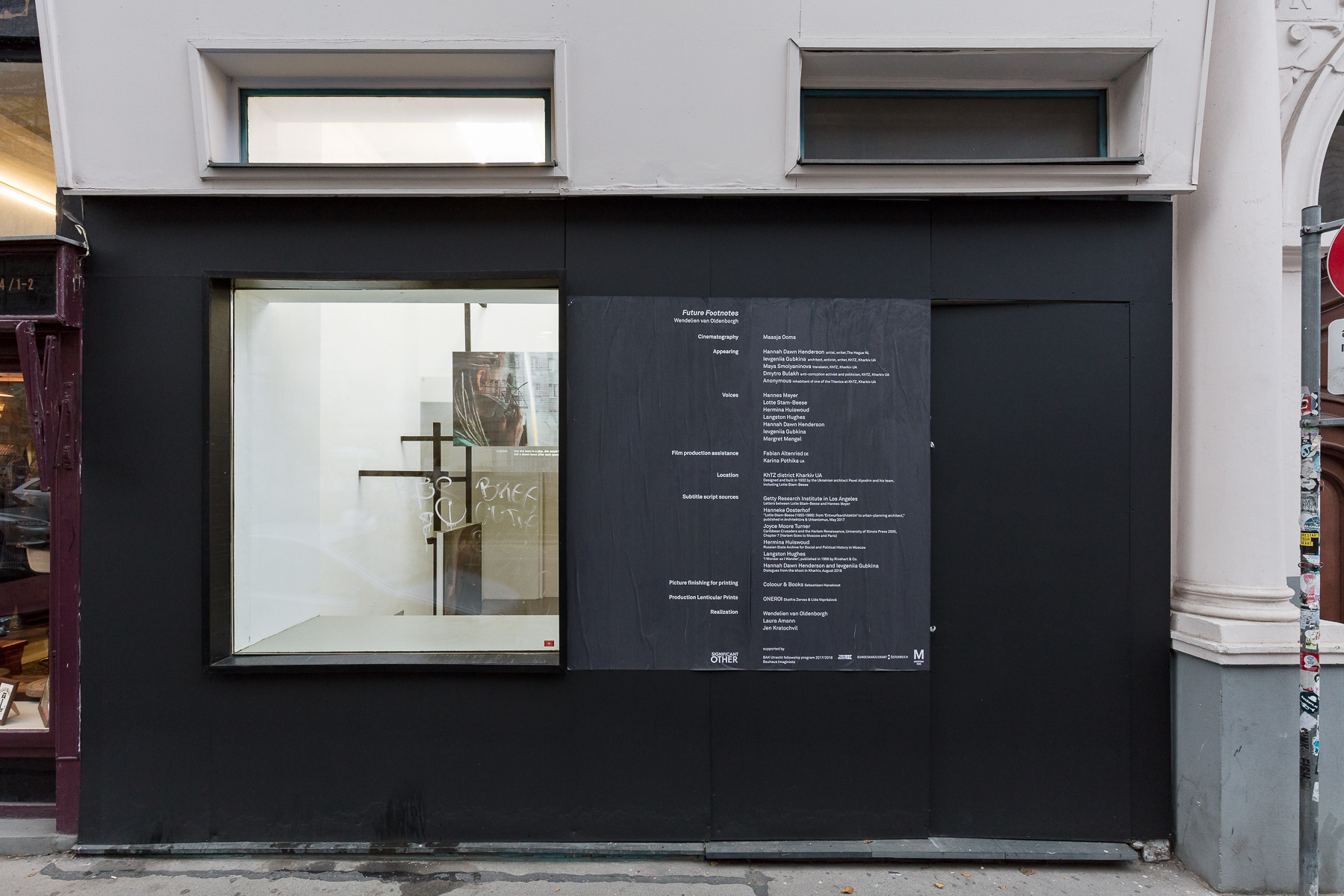Future Footnotes [2018]
lenticular prints with subtitles (video)
15 min., 7 min. and 13 min. respectively
click here to download
the press release of Significant Other ︎
or visit their website ︎
click here to download
the review in Artforum February 2019 ︎
click here to access
the review in Springerin January 2019 ︎
lenticular prints with subtitles (video)
15 min., 7 min. and 13 min. respectively
click here to download
the press release of Significant Other ︎
or visit their website ︎
click here to download
the review in Artforum February 2019 ︎
click here to access
the review in Springerin January 2019 ︎
Around the same time that the Bauhaus-educated architect Lotte Beese – who had been the lover of architect and Bauhaus director Hannes Meyer, became a single mother and lost her design job with the modernist architect Bohuslav Fuchs in Brno, Czechoslovakia – decided to go to the Ukraine to practice her profession and pursue her ideals, the politically active Hermina Huiswoud left the United States to live and work in the Soviet Union to contribute to the struggles against inequalities in race and class, and to fight for the sovereignty of all colonies, together with her husband Otto Huiswoud. Though they never met, both women were politically active, experienced the Soviet Union in the early 1930s and ended up influencing public life in the Netherlands in the 1950s. Stam-Beese was a major influence on Dutch post-WW II housing in her role as Chief Architect for Urban Planning for the Rotterdam Department for Urban Development and Reconstruction. Huiswoud, having edited the magazine The Negro Worker (1928–1937) and traveled the world for the Communist International (Comintern), became an active political voice for the Caribbean-Dutch community, notably through her close connection with artists from the Harlem Renaissance - poet, social activist, and playwright Langston Hughes amongst them. Both Stam-Beese’s thoughts on housing and Huiswoud’s struggles for racial and class equality were approached through the ideals and early practices of communism. For both women, love and friendship had a significant role in their life trajectory.
The lenticular prints presented at Significant Other are small moments and sketches produced by the process of preparation and filming a work around these parallel trajectories. The spatial structure is specially designed for the exhibition at Significant Other.








Installation view of Future Footnotes at Significant Other, Vienna, 2018. Photographs by kunst-dokumentation.com